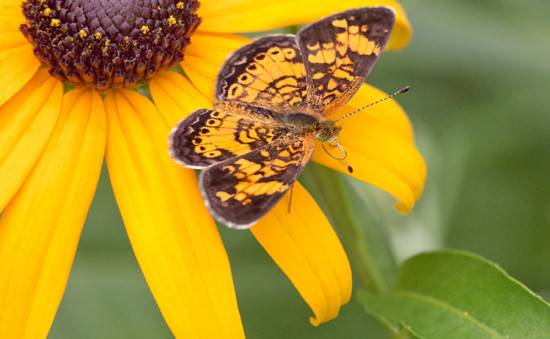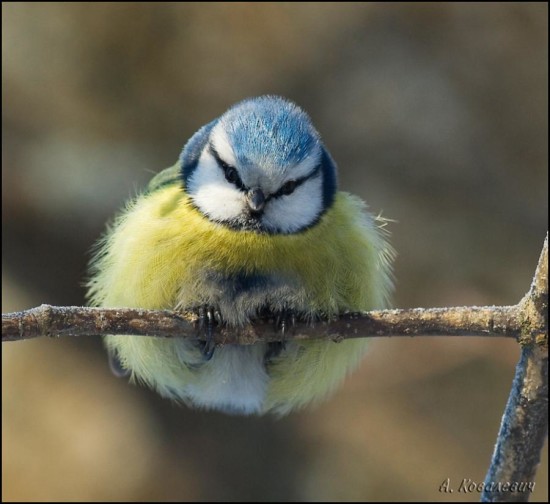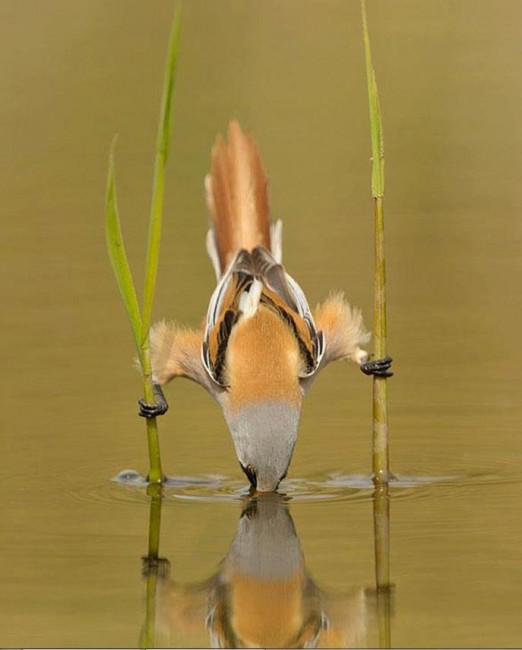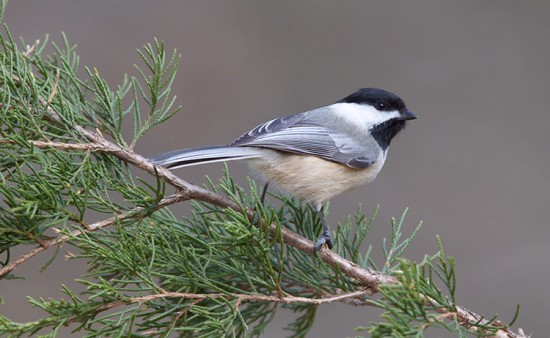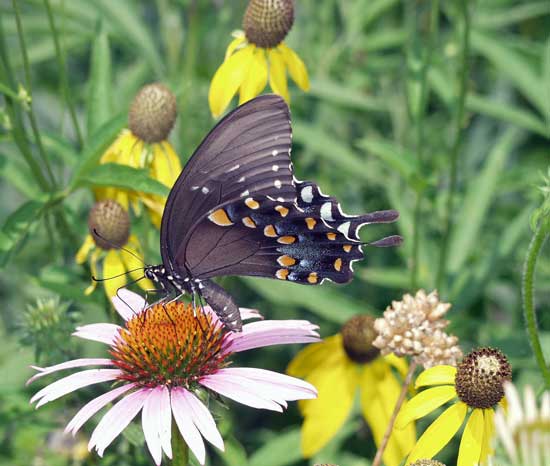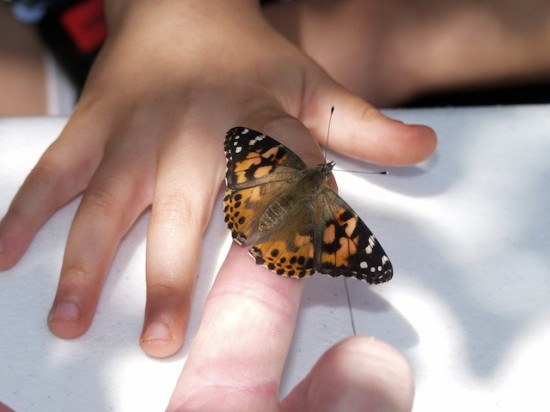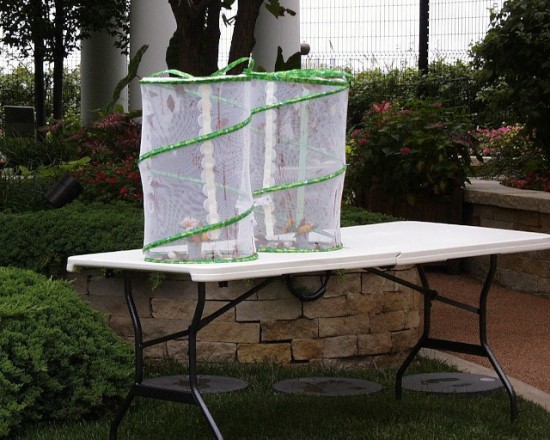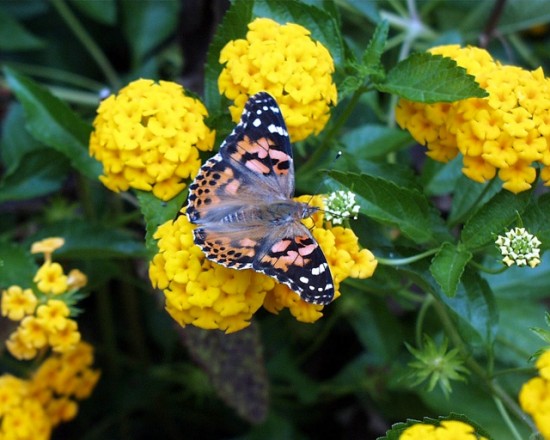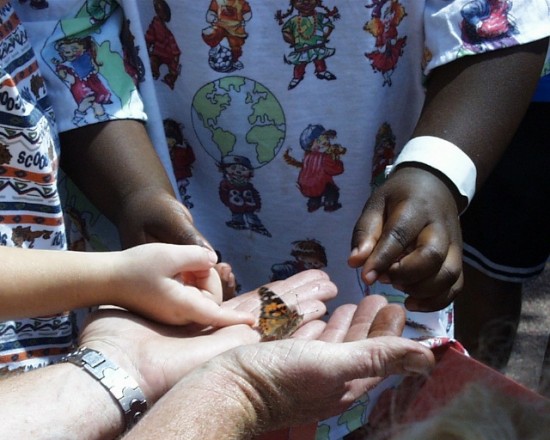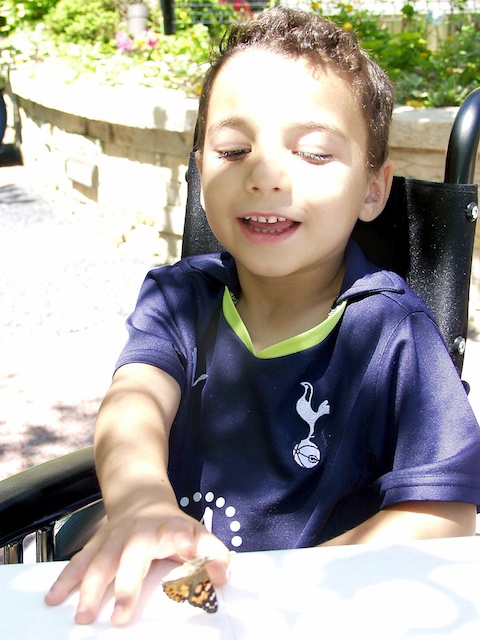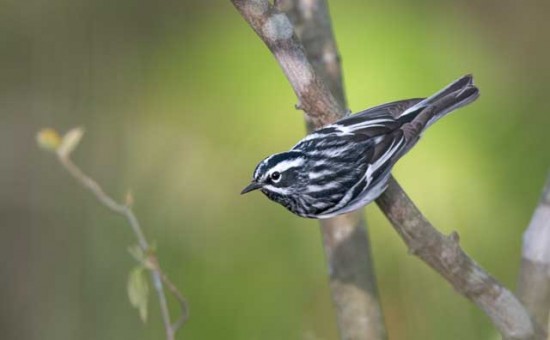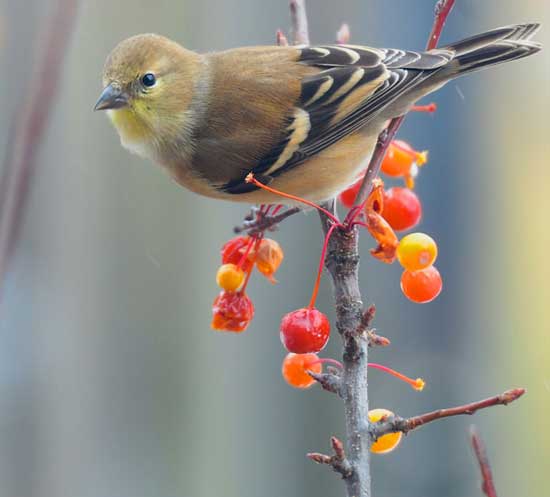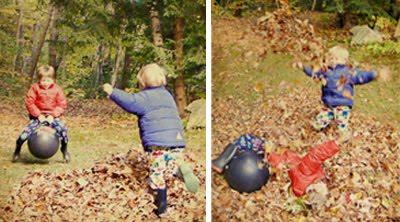Wildlife
Wordless Wednesday, 8/28/13 – Pearl crescent butterfly
August 28, 2013
Avian delights
July 4, 2013
I received this email from a TLN member this morning, thought you might enjoy:
Half a dozen baby blue tits (they don’t have their crests yet)
have found my feeders and are having quite a time. One keeps
slipping off the perch and hanging upside down by one foot.
Another pecked at the plastic above the feeding hole to get to the seeds
but finally caught on. I’m trying to read my work for today but
can’t stop giggling.
For more information on blue tits, see the Royal Society for the Protection of Birds (RSPB) website: http://www.rspb.org.uk. The image is from pixdaus.com.
Wordless Wednesday, 6/6/12 – Bearded reedling
June 6, 2012
This photo by Dutch photographer Edwin Kats was very popular on the TLN Facebook page, so here it is as this week’s Wordless Wednesday photo – first WW post from my new home in College Station, TX. Visit ‘s website at www.edwinkatsphotography.com.
Nurture connection to nature by nurturing winter wildlife
December 29, 2011
The TLN Blog has published posts in the past on winter wildlife, and we will do so again in the coming year. But today I’m sharing this post from one of my favorite blogs, Beautiful Wildlife Garden:
Top 10 Tips for Your Winter Wildlife Garden
The article discusses the many rewards of creating a winter wildlife garden and offers tips on how to best provide food, water, and shelter for birds.
And speaking of which, the Audubon Christmas Bird Count is still on, through January 5th:
Each of the citizen scientists who annually braves snow, wind, or rain, to take part in the Christmas Bird Count makes an enormous contribution to conservation. Audubon and other organizations use data collected in this longest-running wildlife census to assess the health of bird populations – and to help guide conservation action.
Thanks again to Beautiful Wildlife Garden for the heads up on this.
So whether you’re enjoying watching wildlife from the comfort of your warm, cozy home or outside braving the elements as a Citizen Scientist for the Bird Count, connecting with nature at this time of year will nurture and sustain you until spring returns.
Wordless Wednesday, 8/3/11 – Black swallowtail butterfly
August 3, 2011
Gary Wangler, Horticulturist/Manager of Grounds Operations/Horticultural Therapist of the St. Louis Children’s Hospital took this photo at a State Park last week, where some of the hospital patients were enjoying a week-long summer camp. Thanks for the gorgeous image, Gary!
For another recent post about butterflies at the St. Louis Children’s Hospital, click on the following blog title: http://www.healinglandscapes.org/blog/2011/06/butterfly-magic-st-louis-childrens-hospital-healing-garden/.
Butterfly magic, St. Louis Children’s Hospital Healing Garden
June 3, 2011
Last week, Painted Lady butterflies were released in the Olson Family Garden at the St. Louis Children’s Hospital. Gary Wangler, Horticulturist/Manager of Grounds Operations/Horticultural Therapist sent these photographs and this description:
“We do 2 releases each year. I get 100 larvae off the internet as a kit. The kids assemble the small containers with lids, place larvae food into each container, and in 3 weeks, we have butterflies. The last 3 days, I feed the butterflies with cotton balls that I have soaked with sugar water and on a nice day, we send word through the hospital about the release. At 1:00 in the Garden, patients and families come out to release the little winged creatures to the new world.”
This is the magic we can bring to people when they need it most.
The Olson Family Garden is one of the best examples of a children’s healing garden and rooftop healing garden. For more information, visit the St. Louis Children’s Hospital website, www.stlouischildrens.org/content/OlsonFamilyGarden.htm.
Many thanks, Gary, for these wonderful images! All photos by Gary Wangler. By consent of the guardian(s), these images may be used.
Wordless Wednesday, 3/16/11 – Happy Nat’l Wildlife Week!
March 16, 2011
Some links to help you celebrate National Wildlife Week:
National Wildlife Federation, www.nwf.org
Not So Average Mama, on the book Fifteen Minutes Outside: 365 Ways to Get Out of the House and Connect with Your Kids, http://notsoaveragemama.com/
Therapeutic Landscapes Network’s Sensory and Wildlife Plants page, www.healinglandscapes.org/resources-sensory.html
Beautiful Wildlife Garden, www.beautifulwildlifegarden.com
Biophilia: Winter Wildlife in the Healing Garden
December 28, 2010
Humanity is exalted not because we are so far above other living creatures, but because knowing them well elevates the very concept of life.
– Edward O. Wilson, Biophilia
The biologist Edward O. Wilson coined the term “biophilia,” or people’s innate attraction to life and living things. In the winter, when so much plant life is dormant, it’s important to nurture that sense of connection with life, and one of the best ways to do that is by observing wildlife. Fortunately, with fewer leaves on the trees, we can often watch wildlife even from the cozy indoors. “Armchair bird-watching” is one of my favorite pastimes on a cold, snowy day.
Here are a few good posts – two from the TLN Blog archives and three from Beautiful Wildlife Garden, one of my favorite blogs, about encouraging wildlife, especially birds, into the winter garden:
Winter Birds in the Wildlife Garden, by Carole Brown – www.beautifulwildlifegarden.com/winter-birds-in-the-wildlife-garden.html
The Winter Wildlife Garden, by Carole Brown – www.beautifulwildlifegarden.com/the-winter-wildlife-garden.html
A Berry Merry Christmas, by Loret T. Setters – www.beautifulwildlifegarden.com/a-berry-merry-christmas.html
Watching the Birds – Connecting with Nature in Winter, Part III, by Naomi Sachs – www.healinglandscapes.org/blog/2010/01/watching-the-birds-connecting-with-nature-in-winter-part-iii
Especially in Winter, Feed the Birds, by Naomi Sachs – www.healinglandscapes.org/blog/2009/01/especially-in-winter-feed-the-birds
The image above was taken by Kelly Riccetti, author of the blog Red and the Peanut. Her photos, often close-ups of birds, are breathtaking. Thank you, Kelly!
To Rake or Not to Rake? Good Question!
November 9, 2010
Well, it’s November, and if your yard looks anything like mine, the leaves are starting to pile up. So, do you rake them, do you let them be, does a landscaping crew come with their leaf-blowers and haul them away? This year, I’ve seen several articles suggesting that gardeners not rake. Leaves make excellent mulch and they attract and protect all kinds of beneficial wildlife. And they’re free! Personally, as I live under two giant white oak trees, I feel the need to rake some (in fact, in Ellen Sousa’s recent blog post “Leave those leaves!” in which she advocates for not raking, she makes an exception for oak leaves). Carole Brown of Ecosystem Gardening and co-founder of Beautiful Wildlife Garden posted a good “to rake or not to rake” discussion that touches on many reasons why people do and don’t (and even should and shouldn’t) rake: “I am the Lorax, I Speak for the Leaves.”
A recent article in Fine Gardening (“Improve Your Soil by Raking Less“) provides lots of ideas about how to turn your leaves into gold. For leaves on the lawn, you can run them over with a mulching mower. Rather than smothering it, the organic matter and nutrients in the leaves will improve turf quality. You can rake leaves into garden beds to create mulch that both protects and feeds. You can even build planting beds with leaves. I highly recommend all three of the above-mentioned online articles for information and inspiration.
If you do choose to rake, think of it as an exercise opportunity rather than a burdensome chore. Who needs the gym when you’ve got leaves! Raking is one of many gardening activities that, if done for 30 minutes a day, can increase metabolic rate, reduce blood pressure, improve cholesterol levels, tone muscles, improve flexibility, and even improve cardiovascular fitness – enough to reduce the risk of heart disease and type-2 diabetes. Raking burns approximately 375 calories per hour (for comparison, jogging burns about 430 calories per hour).
Many horticultural therapy programs include raking, both for the physical and psychological benefits. It’s something most of us have done at some point in our lives, and it often brings back fond memories (mine are a lot like these pictures, jumping into and playing in big piles of leaves).
So if you’ve got leaves, the decision is yours what to do with them. But whether you rake them up, leave them be (sorry, couldn’t resist) or something in between, try to think of them as yet another gift from the garden.
Many thanks to Allison Vallin and her lovely blog, A Tasteful Garden, for the photos.
Get Ready for the Great Backyard Bird Count!
February 8, 2010
It’s almost here, the event you’ve been waiting for: The Great Backyard Bird Count.
